



Collapsible content
Today, we’re going to need a steady hand and a thoughtful plan as we learn to play Simply Fun’s Sticks and Stunts.
Sticks and Stunts is best played with people ages 8 and up and can be played with 2 to 6 players.
Each Sticks and Stunts game box contains:
1. 6 double sided Bingo boards
2. 6 Sticks and Stunts screens
3. 90 Stunt Sticks, 15 of 6 colors
4. 72 Bingo markers
5. 158 Activity cards in 8 categories, including: Lucky Sticks, Skills Challenge, Speed Builder, Secret Plans, Memory Builder, Create It, Number Whiz, and Knowledge Master
6. 16 two-sided number tokens, from 1 to 16, round out the contents of the box
To set up the game, first decide if you will play as individuals or on teams. Distribute the Stunt Sticks to all players or teams, giving everyone at least two sticks of each color.
All players or teams select one bingo board and one screen in the same color.
Stack the 16 number tokens, number side down, in random order. Place the stack within reach of all players.
Place the 72 bingo markers into several smaller piles and then place them within the play area.
Shuffle the Activity Cards and place about half the cards (activity side up) near the center of the play area forming a draw deck.
Place the remaining cards back in the box and designate an area for the discard pile.
Now you’re ready to begin.
The starting player is the card reader for the first round. The card reader completes the following actions in each round:
1. Flip over the top number token to reveal the number. (If a player or players win the activity, this is the number they will cover on their bingo boards with a marker during that round.)
2. Next, take the top Activity card, face up, from the deck of Activity Cards. (Do not look at the back of the card or allow other players to see it, as some cards have answers on the back.)
3. Read the front of the card out loud to the group and follow the instructions.
During play, a player must try to complete the activity on the card he draws. If playing in teams, choose one member of the team to lead in completing the activity on the card in each round.
For example, if a Lucky Sticks activity card is drawn, players must secretly select sticks and have all the other players guess the quantities or colors of the sticks chosen.
If a Speed Builder card is drawn, players compete to be the fastest player to complete the structure shown on the card and present it before it falls down.
Remember, there are 8 different categories of activities, each consisting of different stunts to accomplish. Refer to the instruction booklet for examples of other kinds of activity cards.
Once an activity is complete, the winning player – or team of players – may place one bingo marker over the bingo board number that corresponds to the number token. If the number is already covered, the player or team may choose any other open spot on the board to place the token.
When a round is complete, place the activity card in the discard pile and return the number token to the bottom of the number token pile.
The player to the left is the next card reader and the next round begins.
The games ends when the first player or team has four bingo markers in a row. Rows can be horizontal, vertical, or diagonal. Any direction wins the game!

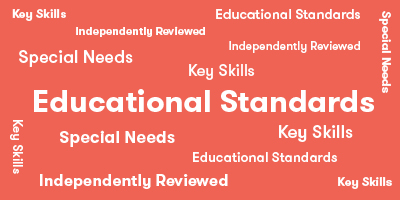
Core Standard*: Language, Math, Science
- Language
- Comprehension and Collaboration: Grade Level 3rd, 4th
- Presentation of Knowledge and Ideas: Grade Level 4th
- Speaking and Listening
- Math
- Generate and analyze patterns: Grade Level 4th
- Operations and Algebraic Thinking
- Science
- In prior grades students learned to use appropriate words to describe the position and motion of objects and the effects of forces on objects. In grades 2-3 students learn that forces work not only to push and pull objects, but also affect objects when they are dropped or thrown. Whenever the motion of an object changes, there is a force involved. Greater forces on a given object result in greater changes of motion. In addition to being able to describe how forces change the motion of objects, students are expected to measure the position of objects using measuring instruments such as rulers. Students can also measure time to the nearest minute. Emphasis should be on comparisons of forces and motions rather than on calculation so that students develop conceptual understanding of how forces make things move : Grade Level 3rd
- Physical Science – Force and Motion

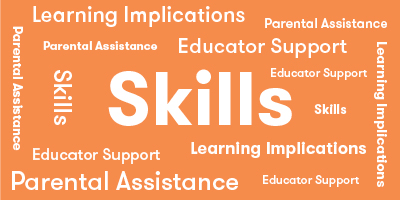
Explore
What Does Child Do To Use Skill In The Game?
Sticks & Stunts involves players examining arrangements of Sticks, Bingo Markers and Cards in order to choose how to move or place Sticks.
How Parents Can Assist Learning
Parents can ask children to stand up and look at the arrangements from different angles. This teaches children to explore and think before acting.
Learning Implications and Educator Support
This game helps children think about inter-relationship among parts. How does one thing I do result in something I do not expect. Many fine motor games, including construction and puzzle solving require this type of study. Educators can encourage children to think about various aspects: placement of Sticks, position Bingo Markers and Cards, carefulness of movement, how next actions change when another play acts, etc.
Determine
What Does Child Do To Use Skill In The Game?
Sticks & Stunts involves many different types of determination, including: 1) players look at a card and memorize the image in order to replicate it with Sticks; 2) players listen to the directions of the card reader while trying to create what the reader is describing; 3) players analyze the position of Sticks, Bingo Markers and Cards to decide how to move Sticks on their turn; 4) players select the correct answer for the trivia questions.
How Parents Can Assist Learning
Parents can encourage children to examine and listen closely to decide on the best option for a given play. If children are having difficulty remembering or choosing an option, ask a couple of questions that will help them remember or deduce the correct answer.
Learning Implications and Educator Support
trategy games or activities that require anticipation of consequences all require analysis of the specific aspects of the situation. Educators can encourage looking at more than one spot before determining which stick to place. Sticks & Stunts also helps children develop observation and visualization skills as they look at and interpret the stick designs and verbal directions of other players. The game also draws on a child's memory of facts or ability to logically eliminate options prior to guessing from three choices. If children are having difficulty remembering or choosing an option, ask a couple of questions that will help them remember or deduce the correct answer.
Compare
What Does Child Do To Use Skill In The Game?
Players will compare the Stick designs and verbal descriptions of other players, as well as the Stick image on the Memory Builder cards, to the Stick designs they are making. They will also compare what worked and didn't work on each turn and begin to modify their approach to the building activities.
How Parents Can Assist Learning
Parents can encourage children to compare their actions to determine what was successful. For example, "Why did a Stick fall or not fall on the previous turn?"
Learning Implications and Educator Support
Sticks and Stunts involves advanced versions of comparison, namely, visual-memory for the Stick designs and auditory-memory for the directions given by the card readers. These types of comparison are advanced because children need to compare something being experienced with something that is remembered. Educators can ask children to discuss why a move worked or didn't, and how one move was similar or different than another.
Remember
What Does Child Do To Use Skill In The Game?
While there are numerous memory building aspects of the game, two primary types of memory activities are highlighted in Sticks & Stunts. First, the Memory Builder cards involve players' building a Stick design that matches the image on the card which was shown only for a few seconds. Second, the Knowledge Master and Number Whiz cards test players' memory of science, history, geography and other fun facts.
How Parents Can Assist Learning
If children are having difficulty remembering the image on the Memory Builder cards, give the children more time and allow them to pick up the card to examine it closely. With the Knowledge Master and Number Whiz cards, parents can ask a couple of questions to help children remember or deduce the correct answer.
Learning Implications and Educator Support
Sticks & Stunts helps develop or reinforce visual, physical and auditory memory. If children are having difficulty remembering the image on the Memory Builder cards, give the children more time and allow them to pick up the card to examine it closely. The game also draws on a child's memory of facts or ability to logically eliminate options prior to guessing from three choices. If children are having difficulty remembering or choosing an option, ask a couple of questions that will help them remember or deduce the correct answer.
Predict
What Does Child Do To Use Skill In The Game?
With experience with the building aspects of the game such as Secret Plans, Skill Challenge, Create It and Speed Builder, players will be able to predict the likelihood of success on any particular turn or action.
How Parents Can Assist Learning
The experience with this game may help children think ahead and be more cautious before acting. This is particularly true if adults reinforce the learning. For example, "Remember what happens if you don't think ahead? You may knock down the sticks."
Learning Implications and Educator Support
In Sticks & Stunts, prediction is closely tied to planning and experimentation when a child takes a stick and tries to place it in different locations prior to determining a final location. Similarly, children may need to decide on which stick to remove by predicting what will happen after the stick is moved. This is a great way to teach trial and error strategy and spatial reasoning. With experience with the game, players will be able to predict the likelihood of success on any particular turn. Educators can also ask children to predict what will happen on each turn. This will help children think more carefully and be less impulsive.
Plan
What Does Child Do To Use Skill In The Game?
Many of the cards require players to quickly plan actions to take in order to build a structure, slide or drop a Stick to a specific spot, make a design or describe a design to other players.
How Parents Can Assist Learning
For the activities that are not timed, parents can encourage children to examine closely to decide on the best option for a given play. This helps reduce impulsivity. For the activities that require speed, encourage children to think first and then act. A few moments of thinking and analysis can help the child make a successful move quickly.
Learning Implications and Educator Support
Playing Sticks & Stunts helps develop observation, analytical and planning skills as children either make quick plans (ex: motor planning to create a Stick structure in Speed Builder), respond quickly to the card reader (ex: motor planning to place Sticks based on directions from card reader in Secret Plans), or determine where to stand and place one's arm and hand to drop a Stick onto a Bingo Marker.
Experiment
What Does Child Do To Use Skill In The Game?
The Create It, Skill Challenge and Secret Plans cards give players chances to experiment with approaches to make successful moves.
How Parents Can Assist Learning
If you observe a child getting stuck on Create It, encourage them to try something completely different. For example, if the child needs to create an elephant, they could try to use the sticks to create the whole elephant or just the head with big ears and trunk. On the Skill Challenge and Secret Plans, children who try different approaches and find what works are more successful than children who are impulsive. Parents can encourage children's efforts to try something different when the previous approach failed.
Learning Implications and Educator Support
Changing perspective is a powerful experimentation technique that supports innovative thinking and creative problem-solving. Encourage children to think about how others think and feel when describing the Secret Plans or making the image on the Create It card. This can help them think of different ways to talk, describe and design to help other players accurately guess or recreate images out of sticks. Willingness try new things and adaptability are also important experimentation skills. For example, If you observe a child getting stuck on Create It, encourage them to try something completely different. For example, if the child needs to create an elephant, they could try to use the sticks to create the whole elephant or just the head with big ears and trunk.
Practice
What Does Child Do To Use Skill In The Game?
The physical activity cards give players practice with their strategies, communication and dexterity.
How Parents Can Assist Learning
No special parent support required. However, to help build children's confidence and motivation, acknowledge and celebrate the progress they make as a result of their practice and effort.
Learning Implications and Educator Support
No special teacher support required. However, to help build children's confidence and motivation, acknowledge and celebrate the progress they make as a result of their practice and effort.
Solve
What Does Child Do To Use Skill In The Game?
Sticks & Stunts involves lots of problem-solving including creating and following verbal instructions, deciding how to move sticks based on the moves of other players and eliminating options in order to pick a correct answer.
How Parents Can Assist Learning
This game encourages children to be persistent in their efforts to solve the different challenges, create designs or answer trivia questions. Drawing conclusions from several tries is important, but doesn't always happen naturally. Parents can help children see what worked by asking questions or by making comments, such as "When you pushed the stick hard, it fell off the table. What do you think will work now?" Parents should comment on children's persistence and their efforts to try to solve the problem. They can also encourage them to help each other with ideas and support.
Learning Implications and Educator Support
This game encourages children to be persistent in their efforts to solve the different challenges, create designs or answer trivia questions. Drawing conclusions from several tries is important, but doesn't always happen naturally. Parents can help children see what worked by asking questions or by making comments, such as "When you pushed the stick hard, it fell off the table. What do you think will work now?" Educators should comment on children's persistence and their efforts to try to solve the problem. They can also encourage them to help each other with ideas and support.
Review
What Does Child Do To Use Skill In The Game?
Several of the activities, especially Create It, Skill Challenge and Speed Builder, required players to review their creations to those on the Activity Card.
How Parents Can Assist Learning
Although not required, it is fun to discuss activities after they are complete. What worked? What was hard? How could I do it differently next time?
Learning Implications and Educator Support
Although not required, it is fun to discuss activities after they are complete. What worked? What was hard? How could I do it differently next time? This type of process analysis can help children learn from each other, and develop communication and social skills.
Demonstrate
What Does Child Do To Use Skill In The Game?
There are different types of demonstration skills developed in Sticks & Stunts. Players demonstrate their knowledge of facts and deductive reasoning with Number Whiz and Knowledge Master. They show their creative skills by making stick versions of the objects on the Create It cards. They exhibit their memory and building skills with many of the other activity cards.
How Parents Can Assist Learning
No special parent support required. However, if a child does an especially good job giving directions or guessing, give the child a high five and ask them to tell everyone they figured it out. Similarly, celebrate and ask children to explain how they were successful in other activities. Positive reinforcement helps build self-esteem and confidence
Learning Implications and Educator Support
No special parent support required. However, if a child does an especially good job giving directions or guessing, give the child a high five and ask them to tell everyone they figured it out. Similarly, celebrate and ask children to explain how they were successful in other activities. Positive reinforcement helps build self-esteem and confidence.
Imagine
What Does Child Do To Use Skill In The Game?
Create It cards encourage players to use their imagination as they think of ways to use sticks to create a design that will make the other players guess the image on the Create It card. They also need to think of ways to describe how to build the structures on the Secret Plans cards.
How Parents Can Assist Learning
When a child is the card reader on a Create It card, encourage them to try making different designs as they think of them. Imagination can be greatly enhanced by simultaneously making prototypes, sketching and building the things you are dreaming up.
Learning Implications and Educator Support
Imagination is the partner to creativity, i.e. high quality creativity is dependent on high quality imagination. Imagination is critical in everything from developing long-term successful relationships to inventing the cure for cancer to solving day-to-day problems where old methods do not work well any more. Playing Sticks & Stunts is good for helping children strengthen their imagination skills across visual, physical and verbal domains.
Create
What Does Child Do To Use Skill In The Game?
After imagining what they are going to do, players need to create what they imagined.
How Parents Can Assist Learning
Creativity is the most complex and advanced thinking skill. Sticks & Stunts helps children explore a range of creative modes, namely, verbal, visual and physical. Creativity is not limited to poetry or art!
Learning Implications and Educator Support
Creativity is the most complex and advanced thinking skill. Sticks & Stunts helps children explore a range of creative modes, namely, verbal, visual and physical. Creativity is not limited to poetry or art!
*Data compiled from CCSSI ELA Standards, WA Science Standards, and Washington Social Studies Standards

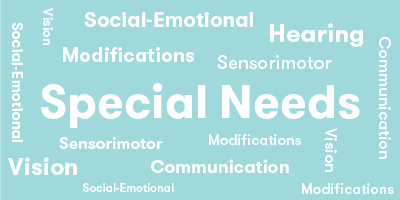
Cognitive
Suggestions for How to Modify Play Experience
Secret Plan cards require the player drawing the card to give very specific directions for placement of sticks to the other players. If the child has language comprehension issues, eliminate the Secret Plan Cards. The other card challenges do not require language comprehension.
Take out the more difficult Activity Cards requiring building with the sticks, leaving just the simple structures. This will allow children who have difficulty with spatial matching to practice making simple patterns.
Eliminate the Bingo Board and number tokens. Play the game according to the rules, but the scoring is based on collecting the bingo markers, not playing them on the Bingo Board. The first person to get 10 bingo markers wins. This makes the game less complex for children with cognitive challenges.
Communication
Suggestions for How to Modify Play Experience
Secret Plan cards require the player drawing the card to give very specific directions for placement of sticks to the other players. If the child has language comprehension issues, eliminate the Secret Plan Cards. The other card challenges do not require language comprehension.
Secret Plan cards require the player drawing the card to give very specific directions for placement of sticks. If the child has language production concerns and draws a Secret Plan card, allow the child to draw another card.
Sensorimotor
Suggestions for How to Modify Play Experience
Sticks and Stunts is not recommended for children who have problems with manipulating and maneuvering small objects. The majority of tasks require picking up, stacking, and/or balancing small sticks.
Social Emotional/Behavioral
Suggestions for How to Modify Play Experience
Sticks and Stunts requires concentration and patience. Children who are impulsive or have a low tolerance for frustration may find this game stressful. Start with the easiest cards, such as the Lucky Sticks, Create It, and Knowledge Master. Add the other categories of cards one at a time.
Play in pairs. Players can then select which team member wants to take on a challenge. This allows children to learn negotiation and also how to support a teammate. Children with emotional concerns can also choose to opt out of a certain number of challenges (for example, three challenges) that are too anxiety provoking and select another card.
Vision
Suggestions for How to Modify Play Experience
This game is not recommended for children with low vision.
Hearing
Suggestions for How to Modify Play Experience
Eliminate the Secret Plan cards, which require listening to and following direction for where to place sticks.
Allow players with hearing problems to read or show the cards that ask questions that need to be answered.
*Data compiled from CCSSI ELA Standards, WA Science Standards, and Washington Social Studies Standards

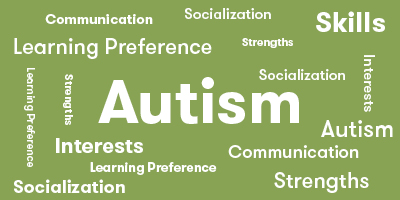
Autism Strengths & Interests
Short Summary of Strengths & Interests
- Has good visual spatial reasoning.
- Has good visual memory skills.
- Has good fine motor skills.
Is good at matching visual items
Is This Game Appropriate? Yes
Description
Matching the colored Stunt Sticks to recreate building patterns, and to pick a correct response to a question is a necessary skill for successfully playing Sticks and Stunts. Depending on the Activity Card selected, players need to match both the colors and structural patterns of the Stunt Sticks.
Has a good memory for words, phrases and dialouge
Is This Game Appropriate? Yes
Description
Memory Builder Activity Cards in Sticks and Stunts requires players to look briefly at a complex structure made of different colored Stunt Sticks. Players have to remember and reconstruct the exact structure.Constructing with the small Stunt Sticks is a precise process, so players learn after several trials how to best place the sticks in different orientations.This involves motor and tactile memory.
Has a good memory for pictures, numbers and patterns
Is This Game Appropriate? Yes
Description
Knowledge Masters Activity cards require players to remember facts.Guessing is okay too!
Likes to put things in order or a sequence
Is This Game Appropriate? Yes
Description
Many of the Activity Cards in Sticks and Stunts require memory for structural patterns.Some involve memory for number facts.
Learns through visualizing or "replaying" actions in their mind
Is This Game Appropriate? Yes
Description
Building the structures in Sticks and Stunts requires that players use a logical sequence to construct patterns and structures.Secret Plan Activity Cards involve one player giving the other players instructions for how to build a pictured structure. Players must follow directions exactly in order to assemble an accurate re-creation of the picture.
Likes activities with rules, such as math and phonics
Is This Game Appropriate? Yes
Description
Players may mentally "replay" actions that were successful in stacking sticks vertically or horizontally to help them in the next similar activity. Additionally, players need to imagine how to create a stick structure in order to give directions to other players to create the structure.
Is very concrete and literal
This game is not appropriate
Learns in small "chunks" (for example, phone numbers are 3 chunks of number xxx-xxx-xxxx that are combined together)
Is This Game Appropriate? Yes
Description
The use of colored Stunt Sticks to recreate patterns is very concrete. Players can easily see whether they were accurate or not.
Is good at nonverbal reasoning and logic
Is This Game Appropriate? Yes
Description
Players may approach creating their structures in chunks, for example, set out bottom sticks first, then next level, etc.
Likes spatial problem solving
Is This Game Appropriate? Yes
Description
Most of the Activity Cards in Sticks and Stunts involve nonverbal reasoning involving spatial understanding. The Stunt Sticks are manipulated to recreate structures.
Can read well with good vocabulary, though may not fully comprehend content
Is This Game Appropriate? Yes
Description
Sticks and Stunts is great for children who love spatial problem solving games. A majority of the activities require recreating multicolored complex 3-Dimensional structures.
Likes to use and has good fine motor skill
Is This Game Appropriate? Yes
Description
Many of the Activity Cards require the player whose turn it is to read instructions to or ask questions of the other players.
Likes established routines or set ways of doing things
Is This Game Appropriate? Yes
Description
The Stunt Sticks in the game are very small.Manipulating them to form the complex structures on the Activity cards requires precise fine motor movements and patience.
Likes manipulating, constructing or building things
This game is not appropriate
Likes to use and has good musical abilities
Is This Game Appropriate? Yes
Description
Sticks and Stunts is a great game for children who like to build things. The majority of activities involve constructing the structures pictured on the Activity Cards.
Likes to use and has good drawing skills
This game is not appropriate
Autism Special Considerations
Appears to ignore other's communication and/or has difficulty giving eye contact to a communication partner
Is This Game Appropriate for Child with Characteristic? Yes
Can Child with Characteristic Play Game w/o Modification? No
Strategies for Developing Compensatory Skills:
Players do not need to give eye contact, but they do need to pay attention to the player reading the activities they need to perform.The activities in the games are motivating, so this may help children focus on others.
Has difficulty understanding complex verbal directions
Is This Game Appropriate for Child with Characteristic? Yes
Can Child with Characteristic Play Game w/o Modification? No
Strategies for Developing Compensatory Skills:
Players do need to pay attention to the cards as they are read, as they provide information about what players need to do. The Secret Plan Activity Cards do require following complex directions, so these could be eliminated.
Uses vocabulary inaccurately or demonstrates echolalia (repeating another's speech)
Is This Game Appropriate for Child with Characteristic? Yes
Can Child with Characteristic Play Game w/o Modification? No
Strategies for Developing Compensatory Skills:
Players need to take turns reading the activities on the cards. In addition, the Secret Plan Activity requires the player leading the Activity give precise directions to the rest of the players.This set of cards can to be eliminated.
Gets stuck repeating a verbal topic or physical actions and/or has difficulty attending to others' actions or topic.
Is This Game Appropriate for Child with Characteristic? Yes
Can Child with Characteristic Play Game w/o Modification? No
Strategies for Developing Compensatory Skills:
If the child has repetitive actions unrelated to the game, give the child a "fidget toy" or provide a desired action or toy between toys. Also provide opportunity for everyone to move after a round of turns.
Has difficulty producing speech/communication
Is This Game Appropriate for Child with Characteristic? Yes
Can Child with Characteristic Play Game w/o Modification? No
Strategies for Developing Compensatory Skills:
Reading and verbalizing are required in this game.Other players can read the cards for the child with autism. The Activity cards that require giving directions can be skipped or eliminated.
Has difficulty sequencing multi-step actions and/or doing complex abstract tasks
Is This Game Appropriate for Child with Characteristic? Yes
Can Child with Characteristic Play Game w/o Modification? No
Strategies for Developing Compensatory Skills:
Many children with autism have excellent visual spatial skills.This game involves many activities that requires spatial understanding. However, the Secret Plan activities may need to be eliminated, or limited to the simplest designs, as they require following detailed verbal instructions. If the child likes construction tasks, the game may help him learn to listen and follow directions.
Demonstrates difficulty initiating and maintaining social interactions
Is This Game Appropriate for Child with Characteristic? Yes
Can Child with Characteristic Play Game w/o Modification? No
Strategies for Developing Compensatory Skills:
Many of the activities of Sticks and Stunts involve social interactions, such as building together or responding to instructions from another player. This may be challenging for some children.The activities are motivating, however, and if the child likes construction tasks, the game may help build social interactions.
Acts out or demonstrates avoidance behaviors when frustrated, overwhelmed, or needs more sensory input.
Is This Game Appropriate for Child with Characteristic? Yes
Can Child with Characteristic Play Game w/o Modification? No
Strategies for Developing Compensatory Skills:
If avoidance behaviors occur, interject additional play. After each round let players take turns thinking of movements or actions all players need to do together.For example, "Everyone turn in a circle three times!"
Has short attention span for non-preferred activities
Is This Game Appropriate for Child with Characteristic? Yes
Can Child with Characteristic Play Game w/o Modification? No
Strategies for Developing Compensatory Skills:
If fine motor skills, visual spatial tasks, and construction are not preferred tasks, Sticks and Stunts may be too challenging.
Needs sameness or consistent routines and/or has difficulty with transitions from one activity to another
Is This Game Appropriate for Child with Characteristic? No
Can Child with Characteristic Play Game w/o Modification? No
Strategies for Developing Compensatory Skills:
Activities change with each turn. For this reason, children who like consistency may find this game challenging.
Has difficulty understanding others' feelings, intentions, and the reasons for others' actions.
Is This Game Appropriate for Child with Characteristic? Yes
Can Child with Characteristic Play Game w/o Modification? No
Strategies for Developing Compensatory Skills:
Players do not need to understand others feelings and intentions with most of the activities in Sticks and Stunts. However, the Secret Plan activities require that the player giving the building instructions understand what the other players are seeing and doing. These cards can be eliminated from game play.
*Data compiled from CCSSI ELA Standards, WA Science Standards, and Washington Social Studies Standards

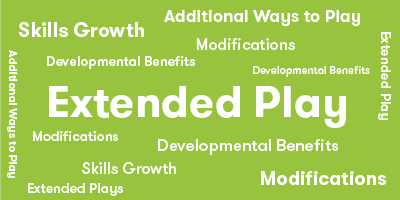
No recommended expansions. Sticks and Stunt has many options already.
Game Details
- 158 Activity Cards
- 90 Stunt Sticks
- 72 Bingo Marks
- 16 Number Tokens
- 6 Bingo Boards
- 6 Screens
- 1 Rules Booklet
- Choosing a selection results in a full page refresh.
- Opens in a new window.






